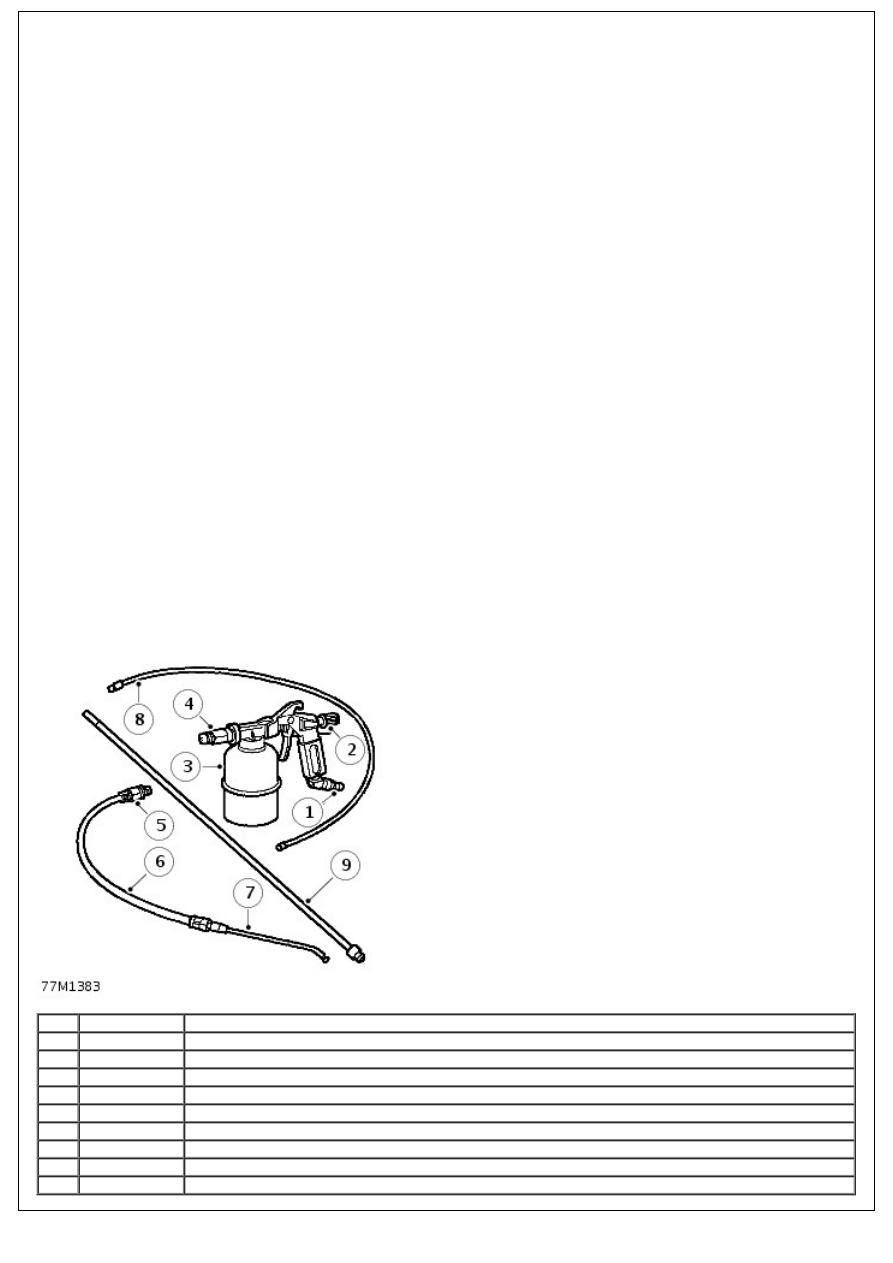Defender. Manual - part 287

PO Box 1
Market Place
Bracknell
Berks. RG12 1JU
Tel. (01344) 858611
All 3M equipment is available from local trade factors or 3M refinishing factors.
3M Caulking Gun 08002
A lightweight, robust metal skeleton gun designed to accommodate 325 mm (12.8 in) cartridge for dispensing sealants
etc. This gun facilitates rapid cartridge loading and features a quick-release lever for accurate material ejection and cut-
off control.
3M Pneumatic Cartridge Gun 08012
An air line fed gun for application of 3M cartridge products. Excellent ease of application for a smooth sealant bead, and
incorporates a regulator valve for additional control.
Other 3m applicator equipment available:
3M Pneumatic Applicator Guns
Air line fed gun for application of 3M sachet sealers (Part No. 08006 for 200 ml (6 fl oz) and 310 ml (9 fl oz) sachets,
and Part No. 08007 for all size sachets including 600 ml (18 fl oz).
3M Applicator Gun 08190
For application of 3M Structural Adhesive 08120.
3M Inner Cavity Wax Applicator Gun
Features 750 mm (29.6 in) flexible tube and using 1-litre (1.76 pt) canisters, this approved equipment is available from
all 3M refinishing factors.
Heavy Duty Manual Gun
Cavity wax application equipment and techniques
Item Part Number
Description
1.
-
Air inlet
2.
-
Flow control (spray pattern adjustment)
3.
-
Pressure cup (1 litre [1.7 pt] capacity). Maximum pressure 140 psi (9.7 bar, 9.8 kg/cm").
4.
-
Gun connector
5.
-
Lance nipple connection
6.
-
Flexible lance
7.
-
Rigid directional hook wand (forward cone spray pattern)
8.
-
Flexible nylon 1100mm (43.3in.) lance with 360° spray pattern
9.
-
Rigid 1100mm (43.3in.) lance with 360° spray pattern